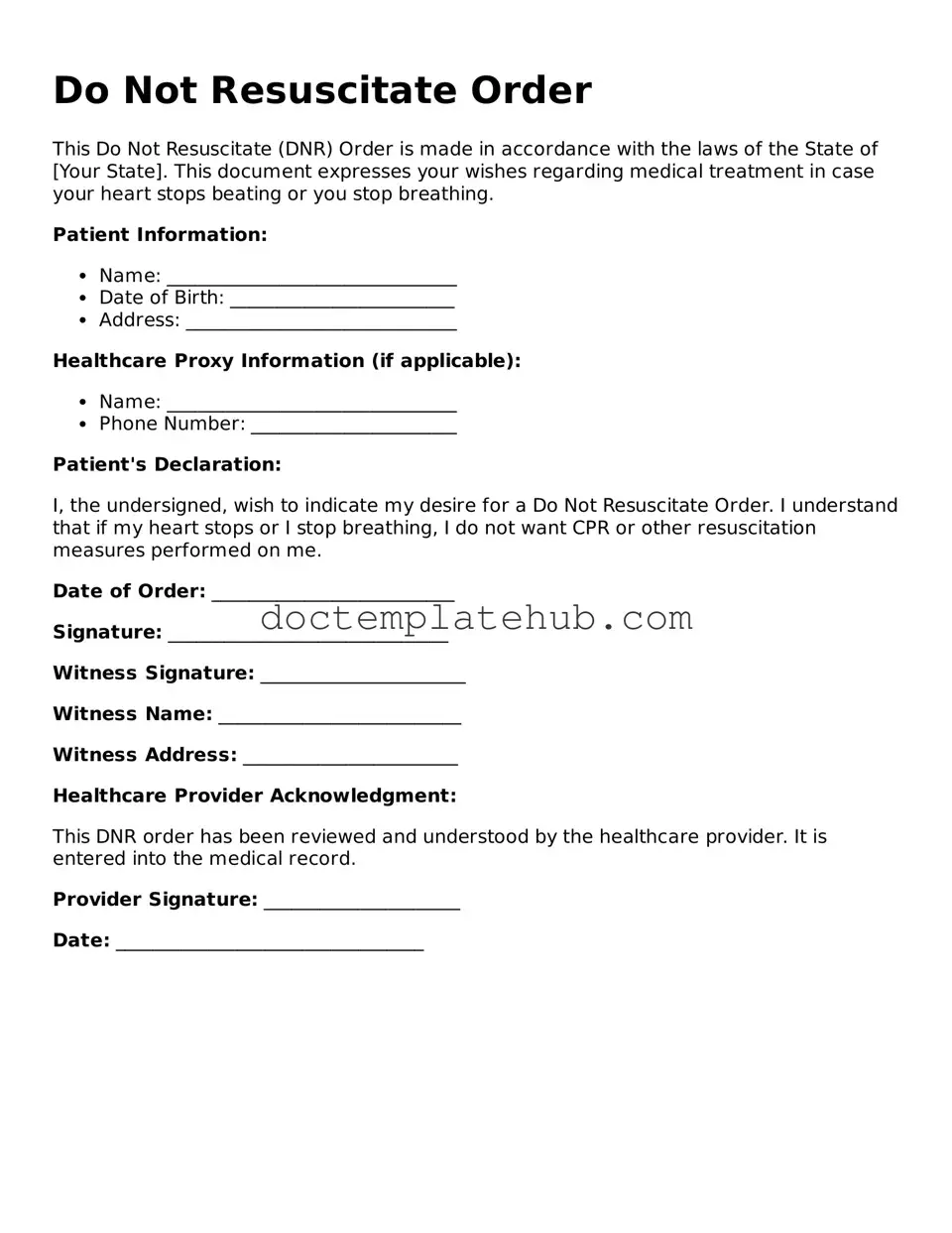What is a Do Not Resuscitate Order (DNR) form?
A Do Not Resuscitate Order (DNR) form is a legal document that allows individuals to express their wishes regarding resuscitation efforts in the event of a medical emergency. When a person has a DNR in place, medical personnel are instructed not to perform cardiopulmonary resuscitation (CPR) or other life-saving measures if the individual stops breathing or their heart stops beating. This order is typically used by individuals with terminal illnesses or severe health conditions who wish to avoid aggressive interventions that may not improve their quality of life.
Who can complete a DNR order?
A DNR order can be completed by a competent adult who understands the implications of the document. This may include patients themselves or, in some cases, legal representatives or healthcare proxies if the patient is unable to make decisions. It is essential for individuals to discuss their wishes with family members and healthcare providers to ensure that everyone understands the intent behind the DNR order. In some states, specific forms or procedures may be required to validate the DNR, so consulting with a healthcare professional is advisable.
How is a DNR order implemented in a healthcare setting?
Once a DNR order is completed and signed, it should be provided to all healthcare providers involved in the individual’s care. This includes hospitals, nursing homes, and emergency medical services. The order is typically placed in the patient's medical record and should be easily accessible to medical staff. In emergency situations, first responders will look for the DNR order to determine the appropriate course of action. It is crucial for individuals with a DNR order to carry a copy with them, especially if they are traveling or may be in situations where emergency care is needed.
Can a DNR order be revoked or changed?
Yes, a DNR order can be revoked or changed at any time by the individual who signed it. To do so, the individual should clearly communicate their wishes to their healthcare provider and ensure that any new directives are documented appropriately. It is also advisable to inform family members and caregivers about the changes to avoid confusion during a medical emergency. If a person decides to cancel their DNR, they should destroy any copies of the original document to prevent any miscommunication in the future.
